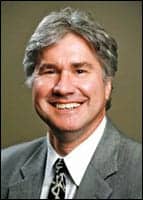 |
Thriving in today’s economy demands that sleep professionals adopt fiscally conscious practices and innovative ways to improve and streamline patient care. Increasing the number of patients seen daily has become an economic necessity that can be best accomplished with skilled physician assistants (PAs) and nurse practitioners (NPs).
Adding nonphysician health care providers to a busy sleep medicine practice can significantly benefit aspects of patient care, including but not limited to sleep histories, medical examinations, CPAP compliance enhancement, and assisting with behavioral medicine interventions. PAs and NPs also can be beneficial in the areas of medication management and supervision. There is already ample evidence of the value of PAs and NPs in primary care, specialty medicine practices, emergency departments, and working with hospitalists. Physician assistants and nurse practitioners improve service by reducing waiting times until appointments are available, managing follow-ups, addressing needs for medication renewals, and helping with patient callbacks of test results. They also are often able to spend more time with patients than physician’s schedules may allow, affording patients the opportunity to have more time with a health care practitioner. With the explosive realization of the prevalence of sleep disorders, its public health implications, and the benefits of good sleep, the demand for sleep medical services is growing exponentially. Physician assistants and nurse practitioners can help meet that demand.
THE NEED FOR SPECIALISTS
The current national physician provider mix is gravitating toward providing greater numbers of specialists and fewer primary care physicians, while the opposite trend is occurring in sleep medicine. With sleep board examinations now being administered by the American Board of Internal Medicine (ABIM), the window of opportunity is narrowing (and closing after the 2011 exam) for non-fellowship-trained physicians to qualify for board eligibility, which could eventually result in fewer physicians being board certified yearly in the specialty of sleep medicine. Obviously, sleep fellowships will continue to turn out physicians, and in all likelihood, more fellowship slots will open to accommodate some of the increased demand for sleep medicine specialists. For basic sleep problems, many primary care physicians already incorporate sleep medicine into their existing practice, as do specialties such as neurology, pulmonary, cardiology, otolaryngology, and now bariatric medicine. But with the growth of sleep science and importance of treating sleep disorders, the clinical expertise needed to properly evaluate, diagnose, and manage more complex sleep patients requires practices whose primary clinical specialty is sleep medicine.
MEETING DEMAND
As the supply of physicians eligible to become board certified in sleep decreases, how will the demand of increasing numbers of patients with sleep disorders be met? Some sleep practices will likely hire other physicians who have received special training in sleep medicine courses (but who may not be board eligible); many already have or will associate with clinical psychologists, especially for behavioral sleep issues. But adding a nonphysician health care practitioner to a sleep medicine practice allows an office to see more patients, render care more quickly and efficiently, and facilitate referrals to the diagnostic arm of the practice—all of which may expand a patient base, maximize diagnostic efficiency of the practice, and enhance revenue. In addition, an NP or PA’s overhead with respect to salary, benefits, and impact on malpractice insurance compares quite favorably to costs incurred hiring a physician.
RISING REGULATORY REQUIREMENTS
Recent sleep medicine regulatory requirements for credentialing and accreditation are aimed at ensuring oversight and necessitating adequate training and clinical expertise of both technical staff and supervisors. This trend affects practice licensure, lab accreditation (and therefore payor access), eligibility to perform and interpret studies, and ability to disburse durable medical equipment (DME). Medicare guidelines for reimbursement are gravitating toward requiring lab accreditation and board certification of the lab’s medical director to perform studies, as well as physician eligibility to interpret diagnostic studies and generate dictated reports.
The goal of regulatory oversight and certification is to maintain a critical mass of qualified, eligible sleep practitioners and centers while controlling costs. These regulations do so by discouraging unqualified and nonaccredited sleep labs that perform cursory consultation and studies and then dispense DME to generate revenue. A tighter regulatory atmosphere will likely result in fewer marginally qualified sleep clinics and labs, leading to an increased volume of patients for legitimate sleep practices. The anticipated increase of patients to be referred to qualified sleep practices further underscores the benefit of adding NPs and PAs.
 |
| Source: American Academy of Sleep Medicine 2008 Membership Report. |
TRAINING NPS AND PAS IN SLEEP MEDICINE
There is currently no sleep disorders subsection in national organizations for physician assistants or nurse practitioners. Many NPs and PAs work in primary care practices, and since their formal training curriculum is aimed at general medicine, there is no requirement for specific training in sleep disorders. General subjects in the area of neurosciences may be covered, but unless there is specific exposure during clinical training internships, graduates entering practice may have a limited knowledge base in those areas of neurobiology or clinical training pertinent to sleep. Optional tracks that include sleep disorders may be available as electives in some nurse practitioner programs but typically are not available in the physician assistant’s curriculum. For nurse practitioners or physician assistants who work in sleep clinics, the sleep training they receive is generally provided by the physicians they work for, based on its relevance to current practice demands.
Until recently, PAs and NPs who wanted to obtain continuing education and develop expertise in sleep disorders have had to rely on sporadic lectures on selected sleep subjects given at regional and national meetings or attend courses primarily designed for physicians. These courses are often excessive in terms of tuition cost and length, and generally present an array of subjects that may not be relevant to physician assistants or nurse practitioners. In response to this, there are now a very few select schools of sleep medicine that have developed courses specifically designed for PAs and NPs, with a practical emphasis on clinical sleep medicine knowledge and skills suitable for a primary care, specialty medicine, or sleep disorders practice.
The Atlanta School of Sleep Medicine recently surveyed PAs and NPs who have received extended training and incorporated sleep medicine into their existing practices, and the feedback has been quite positive. Of responders, the practices include cardiology, neurology, pulmonary, and internal medicine. In some instances, their role has evolved into the majority of their clinic time being dedicated to sleep (one respondent saying 90% of her practice now was managing sleep disorders). Their duties are variable and include performing intake history and physicals (which have now been expanded to include questions pertaining to sleep disorders); monitoring and ensuring CPAP compliance with follow-up visits and phone calls; limited technical troubleshooting; sorting through insomnia issues (and often making referrals for CBT); referring patients to labs for polysomnograms, MSLTs, or MWTs; and tracking medication efficacy and compliance. A recurring observation is that their added expertise has allowed them to develop an independent sleep medicine “clinic within a clinic.” They report uniformly that the physicians in their practices have felt that the addition of sleep awareness and expertise has been of significant overall benefit to their patients’ satisfaction and level of overall care, which has added further value to the practices.
ADVANCING THE ROLE OF NPS AND PAS
How does sleep medicine weather the confluents of increasing patient demand, decreasing numbers of physicians eligible for sleep specialty certification, and a more stringent regulatory environment? Such trends have increased the administrative, clinical, and economic burden of efficiently running a practice, necessitating a lean, well-trained team of clinical, clerical, and technical staff, in which PAs and NPs play an increasingly important role. Educational initiatives disseminating information about sleep and sleep disorders to medical practitioners, safety and regulatory agencies, and the general public have fostered greater awareness, earlier identification, and more effective treatment of patients’ sleep-related problems. These have collectively served to reinforce the indisputable truth of the essential role of sleep in not only improving quality of life but also maintaining overall health and reducing comorbid medical and psychiatric disorders. Sleep-related issues now wield considerable influence in shaping public health policy to ensure the safety offered by a well-rested populace, further elevating the prominence of the field of sleep medicine, and escalating the need for sleep clinicians. The goal of meeting that demand for medical sleep services would be more readily achieved by increasing the number of PAs and NPs trained in sleep disorders to enhance primary care, specialty medicine, and, in particular, sleep medicine practices.
Michael Lacey, MD, is medical director for Northside Hospital Sleep Disorders Center, Atlanta, and the Atlanta School of Sleep Medicine. He has earned certification from the National Board of Medical Examiners, and board certification by the American Board of Psychiatry and Neurology and the American Board of Sleep Medicine. Lacey is also medical director at Neurotrials Inc and participates extensively in clinical research in the areas of sleep medicine and neurology He can be reached at.





